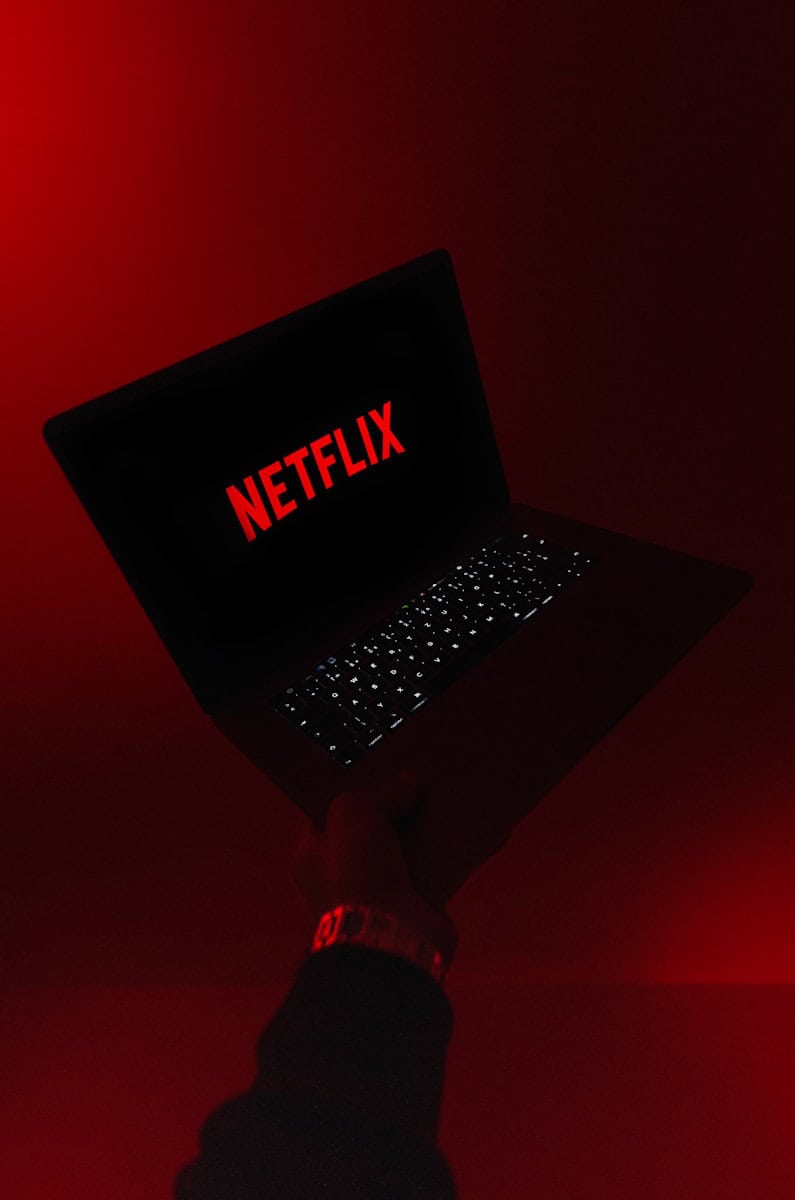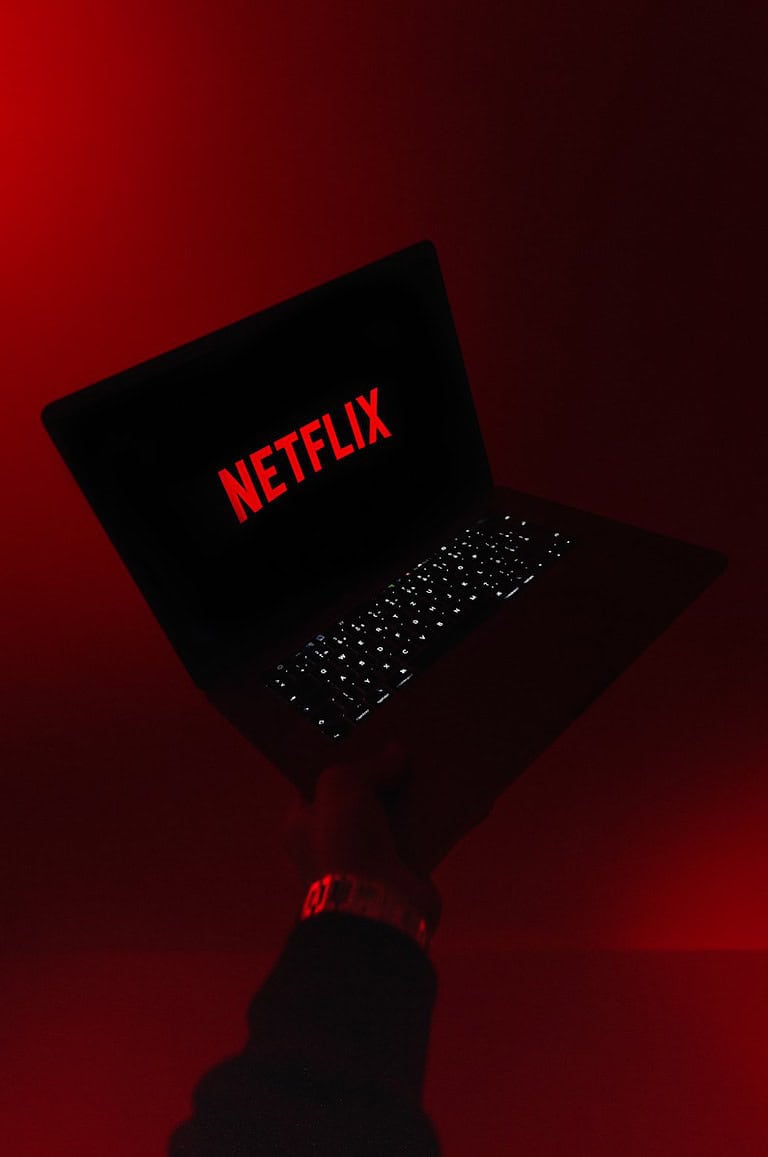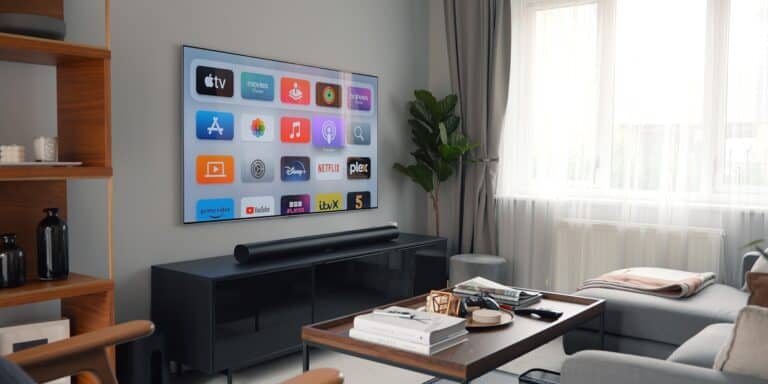
Dealing with a black screen while trying to watch Netflix can be frustrating, especially when you’re ready to relax and enjoy your favorite shows. This common problem affects many viewers across different devices, from smart TVs to streaming sticks and game consoles. The most effective solutions include power cycling your device, checking HDMI connections, and updating your app or device firmware.
Many users experience this issue when Netflix suddenly displays a black screen with or without sound. The problem typically stems from connection issues, outdated software, or hardware conflicts. If you’re facing this annoying glitch, don’t worry – most Netflix black screen problems can be resolved without technical expertise or contacting customer support.
Common Causes of the Netflix Black Screen Issue
Before jumping into solutions, it’s important to understand why this issue happens. The black screen problem on Netflix—where you can hear audio but see nothing, or where nothing loads at all—is usually triggered by one of the following:
- Browser issues (outdated or buggy extensions)
- Corrupted app data or cache
- Outdated graphics drivers
- DRM (Digital Rights Management) conflicts
- Internet connectivity problems
- Ad blockers or antivirus interference
Whether you’re on a smart TV, web browser, Windows PC, Mac, or mobile device, the cause often overlaps across platforms. Let’s go through platform-specific fixes and general troubleshooting steps to get you back to binge-watching.
Fixing Netflix Black Screen on a Web Browser
If you’re on Chrome, Firefox, Safari, or Edge and Netflix only gives you a black screen:
1. Disable Extensions
Some browser extensions—especially ad blockers, VPNs, and security-related add-ons—can interfere with Netflix.
- Temporarily disable all extensions.
- Refresh Netflix and see if the screen returns.
- Re-enable extensions one by one to find the culprit.
2. Clear Browser Cache and Cookies
Corrupt or outdated data stored in your browser can prevent proper playback.
- Open browser settings.
- Clear your cache, cookies, and site data.
- Restart the browser and try Netflix again.
3. Use Incognito Mode
This disables all extensions by default. If Netflix works here, the issue lies with one or more of your installed extensions.
4. Update Your Browser
Make sure you’re on the latest version. Older versions might not support Netflix’s DRM requirements.
Key Takeaways
- Power cycling your device by unplugging it for 30 seconds often resolves most Netflix black screen issues on TVs and streaming devices.
- Check and reconnect HDMI cables or try reversing the cable ends to fix video display problems while maintaining audio.
- Update your Netflix app and device firmware regularly to prevent compatibility issues that cause black screens during streaming.
Common Causes of Netflix Black Screen Issues
When Netflix displays only a black screen but you can still hear sound, there are several underlying issues that might be causing this frustrating problem. Understanding these common causes can help you troubleshoot and resolve the issue quickly.
Internet Connection Problems
Poor internet connectivity is often the primary culprit behind Netflix black screen issues. When your connection speed drops below Netflix’s minimum requirements, the video may fail to load while audio continues to play.
Bandwidth limitations during peak usage times can cause buffering problems that manifest as black screens. This is especially common in households where multiple devices share the same network.
Wi-Fi interference from other electronic devices or physical barriers like walls can degrade your signal quality. Moving closer to your router or switching to a wired Ethernet connection may help resolve these issues.
Some internet service providers (ISPs) may throttle streaming services during high-traffic periods. Running a speed test can help determine if your connection meets Netflix’s recommended 5 Mbps for HD content or 25 Mbps for 4K streaming.
Software and App Glitches
Outdated Netflix apps frequently cause display problems on TVs, smartphones, and other devices. The app may be corrupted or contain cached data that prevents proper functioning.
System updates on devices can sometimes create compatibility issues with the Netflix app. This problem has been noted particularly after Samsung TV updates, where users report black screen problems beginning immediately after an update.
Browser extensions and plugins may interfere with Netflix when streaming on Chrome, Windows, or MacOS systems. Trying Netflix in incognito mode or disabling extensions can help identify if this is the issue.
App permissions or settings conflicts might prevent Netflix from accessing necessary device features. Checking that the Netflix app has all required permissions enabled can resolve some black screen scenarios.
Device Compatibility Issues
HDMI connection problems are a common cause of black screens with audio. Try these fixes:
- Reverse the ends of your HDMI cable
- Connect directly to your TV, bypassing receivers or sound systems
- Replace damaged or low-quality HDMI cables
Outdated device firmware can create incompatibilities with Netflix’s latest app version. This affects smart TVs, streaming devices like Roku, and home theater systems.
Hardware limitations on older devices may prevent them from properly running newer versions of Netflix. Some aging smart TVs and Android devices struggle with the processing demands of current streaming technology.
Display resolution mismatches between your content and device capabilities can cause black screens. Check that your TV or device supports the resolution of the content you’re trying to stream.
Initial Troubleshooting Steps
When Netflix shows a black screen but you can hear sound, or when the app won’t load at all, several quick fixes can resolve the issue without requiring technical expertise. These simple steps often solve the problem in minutes and get you back to streaming your favorite shows.
Restarting Your Device
Restarting your device is the first and most effective troubleshooting step for Netflix black screen issues. This simple action clears temporary memory and reloads all system processes that might be causing conflicts.
For smart TVs, unplug the power cord for about 60 seconds before plugging it back in. Some Samsung TV users report success by holding the power button for 5-10 seconds to perform a proper restart.
With streaming devices like Roku, users can try a quick app restart by navigating to the Netflix channel, pressing the star (*) button, and selecting “Restart app” from the menu.
For smartphones and laptops, completely close the Netflix app or browser, wait 30 seconds, then reopen it. On phones, you can also try force-stopping the app through your device settings.
Checking Netflix Server Status
Sometimes the black screen issue isn’t related to your device at all but stems from Netflix’s servers experiencing problems.
Visit downdetector.com or similar outage reporting websites to check if other users are reporting similar issues. Look for spikes in reported problems that might indicate a widespread outage.
Netflix occasionally performs maintenance that can temporarily affect service. Check Netflix’s official Twitter account for announcements about service disruptions.
If the problem affects only certain shows or movies, this might indicate content-specific issues rather than a complete outage. Try playing different content to narrow down the problem.
Verifying Network Stability
An unstable internet connection is a common cause of Netflix black screen problems. Streaming video requires consistent bandwidth to deliver content properly.
Run a speed test on your device to ensure you have at least 3 Mbps for SD quality, 5 Mbps for HD, and 25 Mbps for 4K UHD streaming. If speeds are lower than needed, try moving closer to your router or reducing other network activity.
Try switching between Wi-Fi and mobile data on smartphones to determine if the problem is with your home network. For smart TVs and streaming devices, bypassing any receivers or sound systems by connecting directly can help isolate connectivity issues.
Restarting your router and modem can often resolve network connectivity problems. Unplug both devices for 30 seconds, then plug in the modem first, followed by the router after it fully boots.
Advanced Troubleshooting Techniques
When basic fixes fail to resolve Netflix’s black screen issue, deeper technical solutions become necessary. These methods target specific system components that often cause streaming problems and require slightly more technical knowledge to implement correctly.
Clearing Browser Cache and Cookies
Browser cache and cookies can sometimes interfere with Netflix’s proper functioning. Over time, these stored files may become corrupted or conflict with Netflix’s streaming technology.
To clear cache in Google Chrome, click the three dots in the top-right corner, select “History,” then click on “Clear Browsing Data”. Make sure to select both “Cookies and site data” and “Cached images and files.” Users can choose to clear data from the last hour, day, week, or all time.
For Firefox users, the process involves clicking the menu button, selecting “Options,” then “Privacy & Security,” and finding the “Cookies and Site Data” section. Clicking “Clear Data” removes both cookies and cache.
After clearing cache and cookies, users should close the browser completely and restart it before attempting to access Netflix again.
Updating or Reinstalling Netflix App
Outdated Netflix applications can cause black screen issues across various devices. Regular software updates fix bugs and compatibility problems.
On smart TVs, users should navigate to the app store or system settings to check for Netflix updates. The exact path varies by manufacturer but typically follows: Settings > System > Software Update.
For mobile devices:
- Android: Open Google Play Store > My apps & games > Update Netflix
- iOS: Open App Store > Profile icon > Available Updates > Update Netflix
If updating doesn’t work, uninstalling and reinstalling the Netflix app often resolves black screen problems. This process refreshes all app data and settings. After reinstallation, users should restart their device before opening Netflix again.
Disabling Browser Extensions
Browser extensions can interfere with Netflix’s video player and cause black screens. Ad blockers and privacy extensions are common culprits that may block critical Netflix scripts.
To disable extensions in Chrome, type “chrome://extensions” in the address bar and toggle off each extension. Users should first try disabling all extensions, then re-enable them one by one while testing Netflix to identify the problematic extension.
For Firefox, click the menu button, select “Add-ons and themes,” and disable extensions one at a time. Edge browser users should click the three dots, select “Extensions,” and toggle extensions off.
Some users might need to create a separate browser profile dedicated to streaming, with minimal extensions installed. This approach keeps regular browsing secure while allowing Netflix to function properly.
Device-Specific Solutions
Different devices often require specific troubleshooting approaches when Netflix displays a black screen with sound. These solutions target the unique hardware configurations and software interactions that can cause streaming problems.
Fixes for Smart TVs and Home Cinema Systems
Smart TVs commonly experience black screen issues due to HDCP (High-bandwidth Digital Content Protection) conflicts. If you’re seeing a black screen on your TV, try unplugging your TV for 60 seconds while pressing the power button for 5 seconds to discharge it completely.
For Samsung and LG TVs, check for firmware updates in the settings menu. Outdated firmware often causes compatibility issues with Netflix’s latest platform.
HDMI connections are frequently the culprit. Try these quick fixes:
- Reverse the ends of your HDMI cable
- Use a different HDMI port on your TV
- Replace the HDMI cable with a newer one
Home cinema systems can create signal interruptions. Bypass receivers or sound systems by connecting your streaming device directly to the TV, then test Netflix again.
Solving Black Screen on Gaming Consoles
PlayStation and Xbox consoles often develop Netflix black screen issues after system updates. For PlayStation users, clearing the cache can help: navigate to Settings > Storage > System Storage > Saved Data and delete Netflix data (not the app itself).
For Xbox systems, try this troubleshooting sequence:
- Power cycle the console (full shutdown, unplug for 30 seconds)
- Uninstall the Netflix app
- Restart the console
- Reinstall Netflix from the store
HDMI splitters are known to cause problems with game consoles. If you’re using one, this might cause HDCP conflicts resulting in black screens. Try connecting directly to test.
Nintendo Switch users should check their internet connection stability, as intermittent connections often result in black screens rather than error messages.
Resolving Issues on Mobile Devices and Tablets
Android devices experiencing Netflix black screens often benefit from clearing the app cache. Navigate to Settings > Apps > Netflix > Storage > Clear Cache.
For persistent issues on smartphones and tablets, try these steps:
- Force stop the Netflix application
- Restart your device
- Check for app updates
- Verify your device has adequate storage space
iOS users should close all background apps and restart their device. If problems persist, deleting and reinstalling the Netflix app resolves most black screen issues.
For both Android and iOS, signing out of Netflix and signing back in often fixes streaming problems. The app might need to refresh authorization tokens that have expired.
E-readers with Netflix capability like certain Fire tablets require regular system updates to maintain compatibility with streaming services.
Advanced Software Solutions
When Netflix displays a black screen, software-related issues often require specialized approaches. These technical solutions address encryption problems, video file corruption, and connection complications.
Tackling DRM and Silverlight Issues
Digital Rights Management (DRM) conflicts can cause Netflix to show a black screen with sound. For Chrome users, this problem has a simple fix – disabling hardware acceleration in the browser settings. Navigate to Advanced settings > System and toggle this feature off.
Some older Netflix implementations still use Silverlight, Microsoft’s discontinued plugin. When Silverlight malfunctions, it can prevent video rendering while audio continues to play.
To resolve Silverlight problems:
- Clear browser cache and cookies
- Update or reinstall the Silverlight plugin
- Switch to a browser that doesn’t require Silverlight (newer versions of Chrome or Edge)
- Ensure your operating system is fully updated
These adjustments help the browser properly handle Netflix’s content protection mechanisms.
Utilizing Video Repair Tools
Corrupted video data can sometimes cause streaming issues on Netflix. Third-party repair tools can help diagnose and fix these problems.
EaseUS Fixo Video Repair offers a comprehensive solution for fixing corrupted video files. While not directly applicable to streaming services, it can help identify if the issue lies with local video processing components.
Other useful video diagnostic tools include:
- VLC Media Player: Test if other video formats work correctly
- System video codecs: Update video codecs through Windows Update
- GPU driver updates: Ensure graphics drivers are current
Running system diagnostics focused on video components can reveal hardware acceleration conflicts that prevent Netflix videos from displaying properly.
Considerations for VPN Users
Many Netflix viewers use VPNs for privacy or accessing region-specific content. However, VPNs can sometimes interfere with video streaming.
If experiencing a black screen while using a VPN:
- Temporarily disable the VPN to test if it’s causing the issue
- Try connecting to a different VPN server
- Check if the VPN supports streaming services
- Update the VPN software to the latest version
Some VPN protocols work better with Netflix than others. OpenVPN and WireGuard typically provide the most reliable streaming experience.
Premium VPN services usually maintain servers specifically optimized for streaming. These specialized servers help avoid the black screen problem while still maintaining privacy benefits.
Audio-Visual Troubleshooting
When Netflix displays a black screen, the issue often lies in your device’s display settings or connection problems. These technical glitches can usually be resolved through systematic troubleshooting.
Addressing HDMI Connection Problems
HDMI connectivity issues are common culprits behind Netflix black screens. Check if your HDMI cables are properly connected to both your device and TV. Sometimes, a loose connection can cause interruption in signal transmission.
Try using a different HDMI port on your TV. Some ports may have compatibility issues or might be damaged. If possible, test with an alternative HDMI cable to rule out cable damage.
HDMI handshake failures often occur between devices. This happens when devices fail to properly communicate through the HDCP (High-bandwidth Digital Content Protection) protocol. To fix this:
- Turn off all connected devices
- Unplug the HDMI cable from both ends
- Wait 30 seconds
- Reconnect everything
- Power devices back on sequentially
Netflix Black Screen With Sound Issues
When Netflix plays audio but shows a black screen, this typically indicates a video rendering problem. This often results from HDCP compliance issues with your monitor or display.
Try these solutions:
- Restart your device – Power cycling can resolve temporary glitches
- Clear cache – App or browser cache buildup may interfere with video rendering
- Update graphics drivers – Outdated drivers frequently cause display problems
- Disable hardware acceleration – This feature sometimes conflicts with Netflix’s video playback
For persistent issues, check if your monitor is HDCP compliant. Older monitors or certain projectors may not support the content protection standards Netflix requires.
Browser extensions can also interfere with Netflix. Try disabling them or using Netflix’s dedicated app instead of a web browser.
Maintaining Optimal Netflix Performance
Regular maintenance of your streaming setup can prevent many black screen issues before they occur. These simple practices ensure smooth Netflix viewing and fewer interruptions.
Regular App and Device Updates
Keeping your Netflix app and device software current is crucial for preventing black screen problems. Outdated apps often develop compatibility issues that can cause display failures.
Check for Netflix app updates weekly in your device’s app store. Many devices offer automatic update options that can be enabled in settings. For smart TVs and streaming devices, system updates should be installed promptly when available.
Outdated browser versions can also cause streaming issues. If you’re watching on a computer, ensure your web browser is updated to the latest version. Some users find that disabling browser extensions can prevent interference with Netflix’s video player.
Optimizing Home Network Configuration
Your internet connection quality directly impacts Netflix performance. A stable connection prevents buffering and black screen issues during playback.
Position your router centrally in your home and away from interference sources like microwaves or cordless phones. For the best streaming experience, use a wired ethernet connection when possible instead of WiFi.
Netflix recommends minimum speeds of 3 Mbps for SD quality, 5 Mbps for HD, and 15 Mbps for 4K content. Test your internet speed regularly using online speed test tools to ensure adequate bandwidth.
Consider setting up Quality of Service (QoS) rules on your router to prioritize streaming traffic. This helps maintain consistent performance even when multiple devices share your connection.
If problems persist, try changing your DNS settings to use public DNS servers like Google (8.8.8.8) or Cloudflare (1.1.1.1), which can sometimes improve streaming reliability.
Frequently Asked Questions
Netflix black screen issues can occur on various devices for different reasons. Below are solutions for the most common problems users encounter when their Netflix screen goes black while the app is running.
How can I troubleshoot a black screen issue with Netflix on my Samsung TV?
For Samsung TV users experiencing a black screen on Netflix, try power cycling both your TV and internet router. Unplug both devices for about one minute, then plug them back in.
Check if your Samsung TV needs a software update. Outdated TV firmware can cause compatibility issues with Netflix.
If the problem persists, try using the star button on your remote to restart the app. This simple solution often resolves the black screen issue.
What steps should I take to fix a black screen with sound when using Netflix on my Android device?
On Android devices, start by force-stopping the Netflix app. Go to Settings > Apps > Netflix > Force Stop, then relaunch the app.
Clear the Netflix app cache and data through the same settings menu. This removes temporary files that might be causing display problems.
Check if your Android OS needs an update, as outdated operating systems can sometimes cause compatibility issues with streaming apps.
Why is there a black screen on Netflix when trying to stream on a laptop, and how can I resolve it?
Laptop users often face black screen issues due to HDCP (High-bandwidth Digital Content Protection) problems. Make sure you’re not using an HDMI splitter as this can cause black screens.
Try updating your graphics drivers to the latest version. Outdated drivers frequently cause display problems with streaming services.
Disable hardware acceleration in your browser settings if you’re streaming Netflix through a web browser. This often resolves rendering issues.
What are the common solutions for a black screen problem on Netflix when accessed through various TVs?
For most TVs, ensure you’re using a proper HDMI cable and try reversing the ends of the cable as a simple troubleshooting step.
Bypass any sound systems or receivers by connecting your device directly to the TV. External audio equipment can sometimes interfere with HDCP signals.
Reset your TV to factory settings as a last resort. Remember to note your current settings before doing this, as you’ll need to reconfigure everything afterward.
How do I reboot Netflix on my TV if I’m experiencing a black screen?
Pressing the star (*) key on your remote while highlighting the Netflix icon often provides a “Restart app” option on many smart TVs.
For TVs without this feature, uninstall and reinstall the Netflix app. This refreshes all app data and often resolves persistent issues.
Sign out of Netflix, restart your TV, and sign back in. This reestablishes the connection between your device and Netflix servers.
Why does Netflix suddenly stop working and only display a black screen on my TV?
Netflix may display a black screen due to internet connectivity issues. Check your connection speed and stability, as streaming requires consistent bandwidth.
HDCP compatibility problems between your TV and streaming device often cause sudden black screens. Try discharging your TV by unplugging it and holding the power button for 5 seconds.
Recent updates to either Netflix or your TV’s firmware might create compatibility issues. Check for any available updates for both your TV and the Netflix app.




